Moshe Levy
The Security of Deep Learning Defences for Medical Imaging
Jan 21, 2022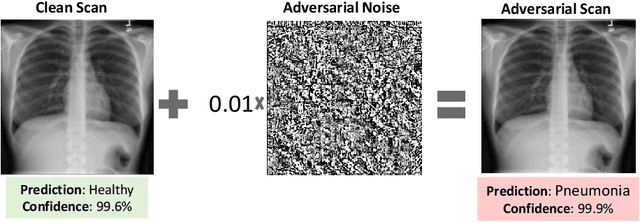
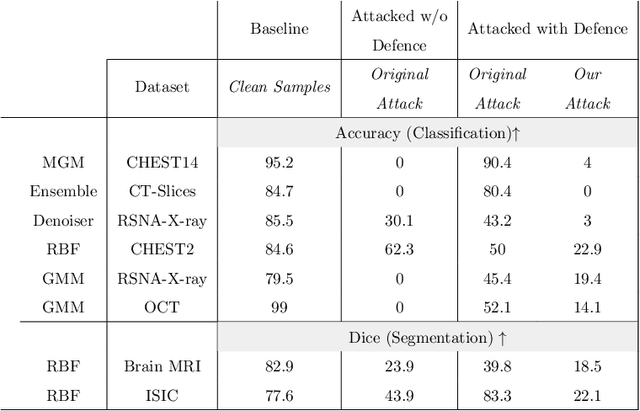
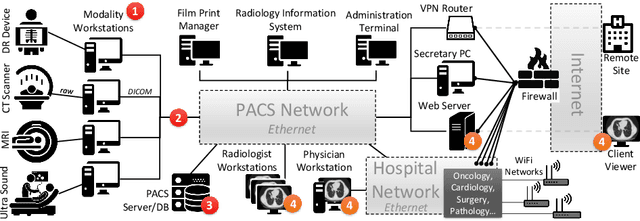
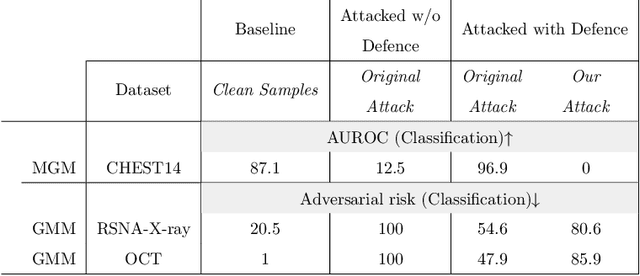
Abstract:Deep learning has shown great promise in the domain of medical image analysis. Medical professionals and healthcare providers have been adopting the technology to speed up and enhance their work. These systems use deep neural networks (DNN) which are vulnerable to adversarial samples; images with imperceivable changes that can alter the model's prediction. Researchers have proposed defences which either make a DNN more robust or detect the adversarial samples before they do harm. However, none of these works consider an informed attacker which can adapt to the defence mechanism. We show that an informed attacker can evade five of the current state of the art defences while successfully fooling the victim's deep learning model, rendering these defences useless. We then suggest better alternatives for securing healthcare DNNs from such attacks: (1) harden the system's security and (2) use digital signatures.
Fairness Matters -- A Data-Driven Framework Towards Fair and High Performing Facial Recognition Systems
Sep 16, 2020


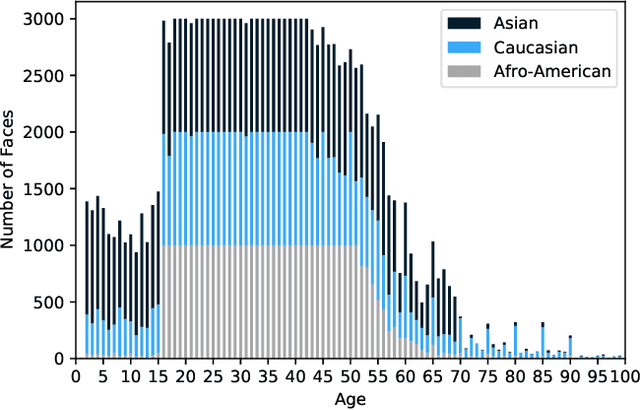
Abstract:Facial recognition technologies are widely used in governmental and industrial applications. Together with the advancements in deep learning (DL), human-centric tasks such as accurate age prediction based on face images become feasible. However, the issue of fairness when predicting the age for different ethnicity and gender remains an open problem. Policing systems use age to estimate the likelihood of someone to commit a crime, where younger suspects tend to be more likely involved. Unfair age prediction may lead to unfair treatment of humans not only in crime prevention but also in marketing, identity acquisition and authentication. Therefore, this work follows two parts. First, an empirical study is conducted evaluating performance and fairness of state-of-the-art systems for age prediction including baseline and most recent works of academia and the main industrial service providers (Amazon AWS and Microsoft Azure). Building on the findings we present a novel approach to mitigate unfairness and enhance performance, using distribution-aware dataset curation and augmentation. Distribution-awareness is based on out-of-distribution detection which is utilized to validate equal and diverse DL system behavior towards e.g. ethnicity and gender. In total we train 24 DNN models and utilize one million data points to assess performance and fairness of the state-of-the-art for face recognition algorithms. We demonstrate an improvement in mean absolute age prediction error from 7.70 to 3.39 years and a 4-fold increase in fairness towards ethnicity when compared to related work. Utilizing the presented methodology we are able to outperform leading industry players such as Amazon AWS or Microsoft Azure in both fairness and age prediction accuracy and provide the necessary guidelines to assess quality and enhance face recognition systems based on DL techniques.
GLOD: Gaussian Likelihood Out of Distribution Detector
Aug 21, 2020


Abstract:Discriminative deep neural networks (DNNs) do well at classifying input associated with the classes they have been trained on. However, out-of-distribution (OOD) input poses a great challenge to such models and consequently represents a major risk when these models are used in safety-critical systems. In the last two years, extensive research has been performed in the domain of OOD detection. This research has relied mainly on training the model with OOD data or using an auxiliary (external) model for OOD detection. Such methods have limited capability in detecting OOD samples and may not be applicable in many real world use cases. In this paper, we propose GLOD - Gaussian likelihood out of distribution detector - an extended DNN classifier capable of efficiently detecting OOD samples without relying on OOD training data or an external detection model. GLOD uses a layer that models the Gaussian density function of the trained classes. The layer outputs are used to estimate a Log-Likelihood Ratio which is employed to detect OOD samples. We evaluate GLOD's detection performance on three datasets: SVHN, CIFAR-10, and CIFAR-100. Our results show that GLOD surpasses state-of-the-art OOD detection techniques in detection performance by a large margin.
Neural Network Representation Control: Gaussian Isolation Machines and CVC Regularization
Feb 06, 2020



Abstract:In many cases, neural network classifiers are likely to be exposed to input data that is outside of their training distribution data. Samples from outside the distribution may be classified as an existing class with high probability by softmax-based classifiers; such incorrect classifications affect the performance of the classifiers and the applications/systems that depend on them. Previous research aimed at distinguishing training distribution data from out-of-distribution data (OOD) has proposed detectors that are external to the classification method. We present Gaussian isolation machine (GIM), a novel hybrid (generative-discriminative) classifier aimed at solving the problem arising when OOD data is encountered. The GIM is based on a neural network and utilizes a new loss function that imposes a distribution on each of the trained classes in the neural network's output space, which can be approximated by a Gaussian. The proposed GIM's novelty lies in its discriminative performance and generative capabilities, a combination of characteristics not usually seen in a single classifier. The GIM achieves state-of-the-art classification results on image recognition and sentiment analysis benchmarking datasets and can also deal with OOD inputs. We also demonstrate the benefits of incorporating part of the GIM's loss function into standard neural networks as a regularization method.
 Add to Chrome
Add to Chrome Add to Firefox
Add to Firefox Add to Edge
Add to Edge